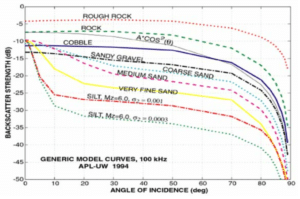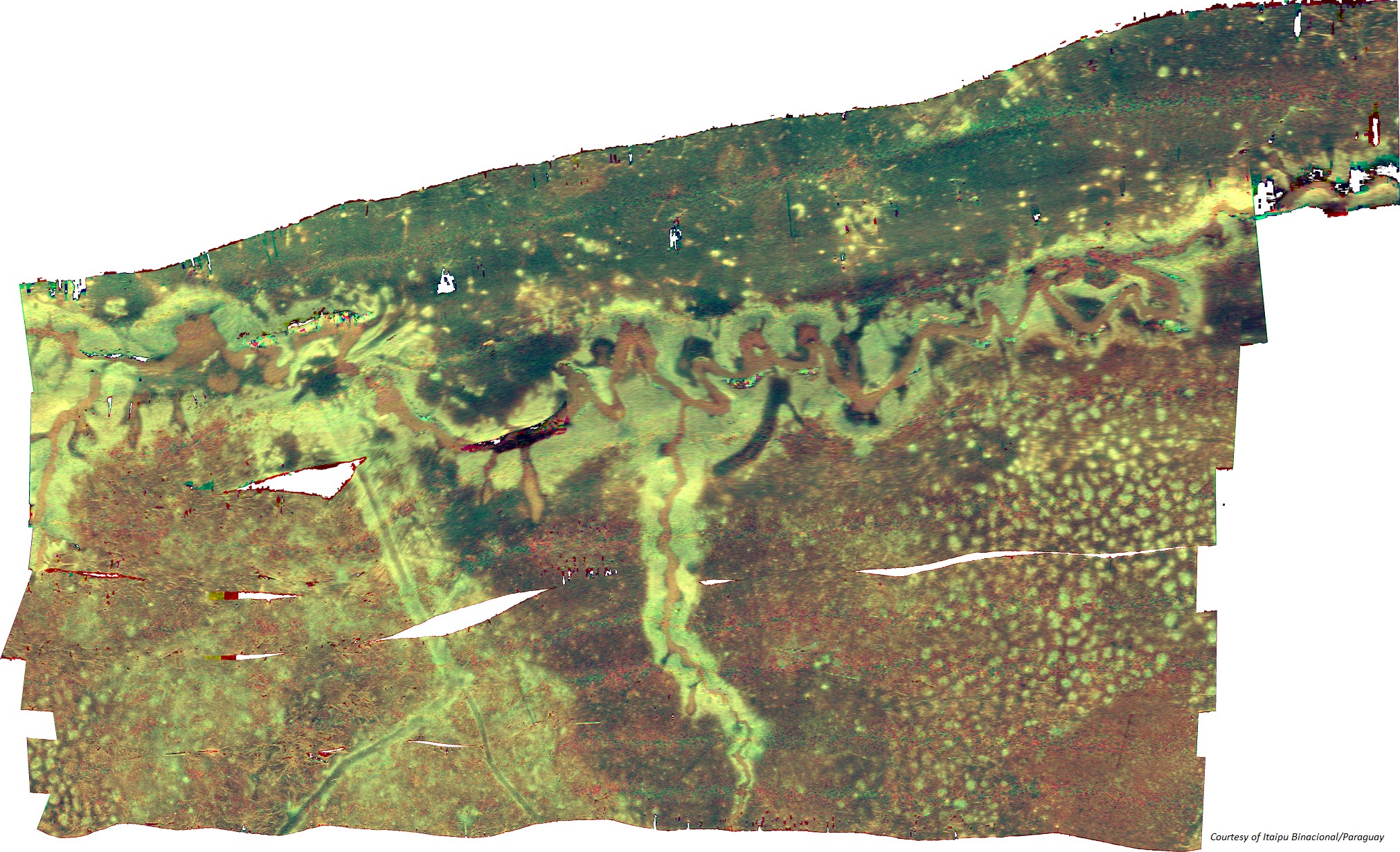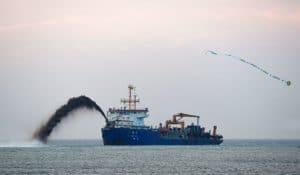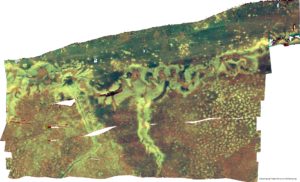Multibeam Backscatter is a tool used in seafloor characterization, and R2Sonic‘s recent MultiSpectral Backscatter advancement dramatically improves this process. MultiSpectral Backscatter comprises two or more frequencies collected in one-pass using an advanced sonar capable of multifrequency transmissions, either interleaved or simultaneous.
MultiSpectral Backscatter should not be confused with MultiFrequency Backscatter
Older sonars can collect Multifrequency Backscatter by passing over the same area multiple times using a different single frequency in each pass, whether using the same or different sonars. The difference between the two definitions above is far more than semantics.
The amount of acoustic energy the seafloor returns to a sonar depends on several factors, including sediment type, sonar frequency, sonar characteristics (radiometric), and grazing angle (geometric). Using different frequencies on the same patch of seafloor results in different backscatter responses enabling better seafloor characterization potential. However, using an older, single-frequency sonar results in a grazing-angle change due to multiple passes, exponentially complicating a potential characterization solution. Using different sonars at different frequencies cannot eliminate the grazing-angle problem even if sonars are normalized to reduce radiometric effects.

From Huff, Acoustic Remote Sensing as a Tool for Habitat Mapping in Alaska Waters
MultiSpectral Backscatter, collected with R2Sonic sonars, removes the geometric and radiometric problems inherent with MultiFrequency Backscatter collected by older, less capable sonars regardless of whether or not they are normalized.
R2Sonic’s unique and patented “OnePass” approach allows the end user to collect the highest quality and reliable MultiSpectral Backscatter data in the most efficient manner, dramatically reducing the time, cost and complexity over alternate methods.
References:
- Brown, C.J. et al., 2019, Multispectral multibeam echo sounder backscatter as a tool for improved seafloor characterization, Geosciences, MDPI, 19pp.
- Huff, L., 2018, Acoustic Remote Sensing as a Tool for Habitat Mapping in Alaska Waters. Marine Habitat Mapping Technology for Alaska, 18pp.
- Hughes Clarke, J.E., 2015, Multispectral Acoustic Backscatter from Multibeam, Improved Classification Potential, Proceedings of the United States Hydrographic Conference, The Hydrographic Society of America, 17pp.



